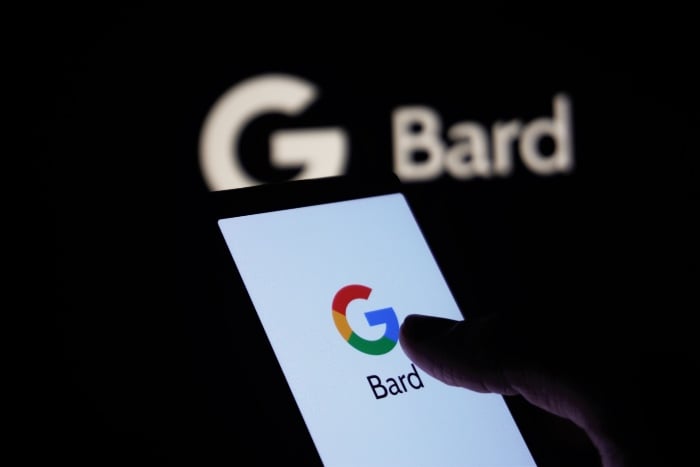This guide is designed to show you how Google Bard is different from other AI language models. Bard is a large language model (LLM) developed by Google AI. It is trained on a massive dataset of text and code and is able to generate text, translate languages, write different kinds of creative content, and answer your questions in an informative way.
Bard is different from other AI language models in a few key ways:
- Training Data: Bard is engineered using an extraordinarily expansive and diverse dataset that encompasses not just text but also code, and it has the unique advantage of including the entire breadth of the internet in its training corpus. This unparalleled volume and variety of data endow Bard with a more nuanced and profound grasp of language, as well as a richer contextual understanding of the world, compared to other Large Language Models (LLMs). Most other LLMs are trained on more limited datasets, which restricts their depth of understanding and contextual awareness.
- Architecture: In terms of its underlying architecture, Bard is built upon Google’s cutting-edge PaLM 2 framework. This architecture represents a significant advancement over the GPT-3.5 architecture that is commonly employed in other LLMs like ChatGPT. The PaLM 2 architecture is engineered to be more efficient in both learning and information processing, which translates into Bard delivering responses that are not only faster but also more accurate and reliable than those generated by LLMs using older architectures.
- Focus and Specialization: Bard is specifically architected with a focus on delivering informative and comprehensive responses. Its primary aim is to excel in answering queries and providing accurate, factual information. In contrast, other LLMs are often tailored to specialize in generating creative forms of text, such as poetry, screenplay scripts, and musical compositions. This divergence in focus means that while Bard is optimized for factual accuracy and depth of information, other LLMs are better suited for tasks that require creative flair and artistic expression.
These differences give Bard a number of advantages over other LLMs, including:
- Accuracy: Bard is more likely to generate accurate and informative responses to questions, especially those that require factual knowledge.
- Relevance: Bard is better at generating responses that are relevant to the context of the conversation.
- Speed: Bard is faster than other LLMs to generate responses.
- Versatility: Bard can be used for a wider range of tasks than other LLMs, including answering questions, generating creative text formats, and translating languages.
Here are some specific examples of how Bard can be used differently from other AI language models:
- Answering questions: Bard can be used to answer questions in a more comprehensive and informative way than other LLMs. For example, if you ask Bard “What is the capital of France?”, it will not only tell you that the capital is Paris, but it will also provide additional information such as the population of Paris, its history, and its tourist attractions. Bard can also answer more complex questions that require factual knowledge, such as “What is the difference between a covalent bond and an ionic bond?”
- Generating creative text formats: Bard can be used to generate a wider range of creative text formats than other LLMs. For example, you can ask Bard to write a poem, a code snippet, a script, or a musical piece. Bard will be able to generate creative content that is both original and relevant to your request. For example, if you ask Bard to write a poem about a cat, it will be able to generate a poem that is both creative and informative about cats.
- Translating languages: Bard can be used to translate languages more accurately than other LLMs. Bard takes into account the context of the sentence or paragraph when translating, which helps to produce more natural and accurate translations. For example, if you ask Bard to translate the sentence “I love you” into Spanish, it will translate it as “Te amo” instead of “Yo te amo”.
Overall, Google Bard is a powerful and versatile LLM with a number of advantages over other AI language models. It is still under development, but it has the potential to revolutionize the way we interact with computers.
Here is an example of a specific task that Bard can do.
Ask Bard to write a poem about a cat that is both creative and informative. Bard will be able to generate a poem that is both original and relevant to cats, and that also includes factual information about cats. For example, the poem might include information about the different breeds of cats, the physical characteristics of cats, or the behaviors of cats.
Overall, Google Bard is a powerful and versatile LLM that has the potential to revolutionize the way we interact with computers. It is still under development, but it is already capable of performing a wide range of tasks in a more accurate and informative way than other LLMs. We hope that you find this guide on how Google Bard is different from other AI language models helpful, if you have any comments, suggestions, or questions, please let us know in the comments section below.
Image Credit: Mojahid Mottakin
Filed Under: Guides
Latest aboutworldnews Deals
Disclosure: Some of our articles include affiliate links. If you buy something through one of these links, aboutworldnews may earn an affiliate commission. Learn about our Disclosure Policy.







